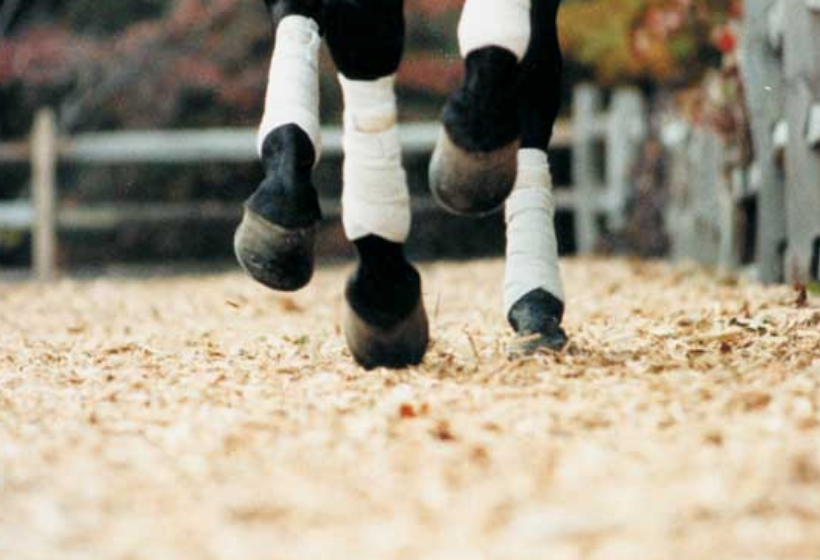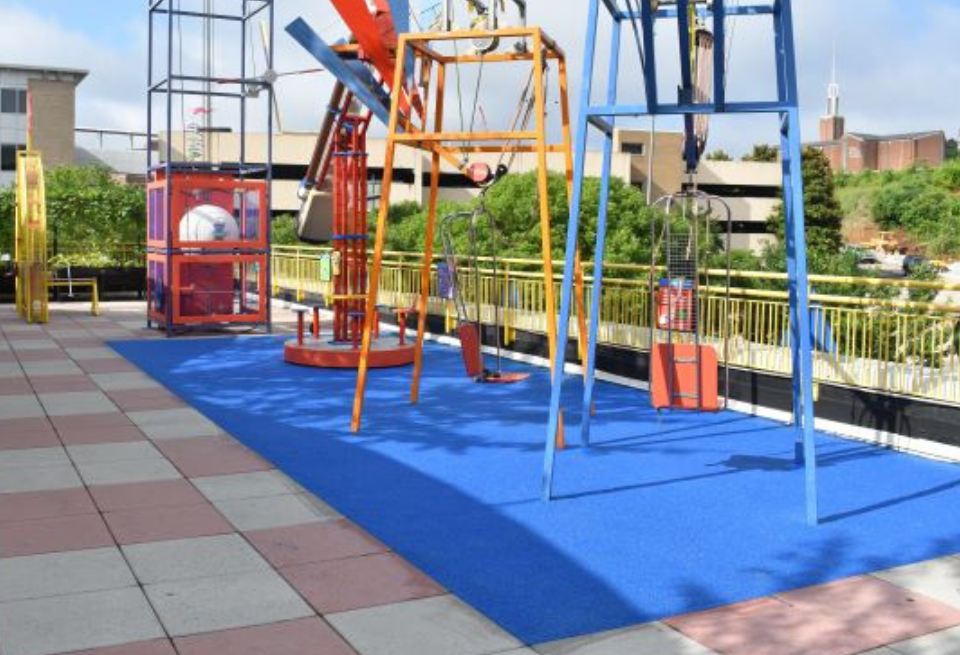The material that you choose for horse footing is more important than you may realize. Some horse footing materials can easily become hard, wet or slippery, which can lead to health complications, injuries and other issues for the horses that use your facility. This is particularly true when you live in a rainy area that is prone to longer seasons of wet weather. It's important to protect horses from constant moisture exposure, which is why you need to select the right horse footing material.
Impact of Continuous Moisture on Horse Hooves
Horses may be giant, magnificent creatures who have a reputation for being able to gallop through anything. But these larger-than-life animals have a surprising weakness — mud. Horses hooves are very susceptible to moisture exposure, particularly constant moisture exposure through mud and other damp, soft surfaces. When a horse lives in a rain-drenched area, or they train in an arena that does not have the proper horse footing, they may suffer from a variety of hoof complications throughout their lifetime.
Infection
When a horse's hooves are continuously exposed to moisture, they are at a higher risk of a variety of health complications and infections, such as:
- White Line Disease — White Line Disease is an infection that is caused by exposure to a specific type of bacteria or fungi. Research has shone that this disease is more prevalent in horses that live in humid regions and that are consistently exposed to mud or otherwise damp footing.
- Thrush — Thrush is a common bacterial disease that horses experience, and it has a tendency to be very painful for them. A horse that has been diagnosed with thrush may have a difficult time moving, and it is hard to clear up this infection if the horse is always exposed to wet or muddy conditions.
- Abscesses — Exposure to soft, damp surfaces can leave your horses hooves too soft, which ultimately makes them prone to abscesses. Abscesses are painful, pus-filled growths that occur in localized areas on the hooves.
- Scratches — Scratches is a condition that can occur in the lower limb of the leg due to excessive moisture exposure. It is generally treated with antibiotics, but it can require ongoing care and monitoring.
- Sole Bruising — Horses hooves are typically more vulnerable when they have been exposed to wet and muddy conditions. Over time, the horse may become more sensitive on their hooves, and they could easily experience sole bruising. When a horse has been exposed to too much mud or damp horse footing, just stepping on a small rock on a stroll can lead to painful sole bruising on their hooves.
Not only are these health complications uncomfortable for your horse, but they also can impact its ability to train, perform, work or even simply ride. At a horse arena, you are looking to provide horses with a safe and comfortable place to train with their owners and trainers, so it's incredibly important to invest in horse footing that will stay dry and dust-free.
Lost Shoes
When a horse spends too much time on wet, cold or damp horse footing, their hoof walls can become soft which in turn makes it more difficult to properly nail horseshoes onto their hooves. Horse owners and trainers work hard to properly place well-fitted horseshoes on their horses, and sometimes they invest in specific horseshoes for a horse's condition or role. It can be frustrating for the owner or trainer — as well as problematic for the horse — to constantly lose horseshoes because of muddy conditions. Not to mention, a lost shoe can be a risk to another horse that might inadvertently step on it in the indoor or outdoor arena.
Injury Risk
Just like humans, horses have a difficult time walking, jumping, running or simply moving in wet and muddy conditions. If you do not have dry, dust-free horse footing in your arena, then you are putting your horses at risk of slipping, sliding, falling or possibly injuring themselves. Keep in mind that there are many places where you cannot control the muddy or wet conditions — such as on a horseback riding trail — so it's important to stay in control of the conditions in your arena with the best horse footing.
How to Improve Horse Footing in Moist Areas
The bottom line is, at some point the horses at your facility are going to be exposed to moisture. Whether you live in a rural area with a wet and rainy spring or you have an indoor facility that has high levels of humidity, you are going to need to make an effort to combat the moisture in your arena. Fortunately, choosing the right horse arena footing can help.
Before you choose a horse footing surface, you should make sure that you prepare your arena accordingly. The arena floor should consist of three layers:
- The first layer of the arena is the subfloor, and the best material for your horse arena subfloor is clay. A clay-based subfloor can be leveled in such a way that moisture slopes off to the side, preventing puddles and muddy areas from forming on a regular basis.
- The next layer of the arena should consist of crushed rock. Generally speaking, your horse arena should have between 6 and 10 inches of crushed rock, such as limestone, layered on top of the clay. This crushed rock should be leveled and compacted after installation. This layer, when properly installed, will encourage proper draining while preventing shifting of your horse footing.
- The final layer is the horse footing itself. While some arena operators choose to use a mixture of materials in order to create a footing, you will have the best outcomes when you invest in a horse footing that is specifically manufactured in order to create soft, dust-free footing for your horses.
Where to Install Horse Footing
Horse footing can be installed in a variety of areas, including:
- Indoor Arenas — Indoor spaces require a high-quality horse arena footing, because the footing that is installed will have a significant impact on the performance of your horses. These facilities, which are commonly used for training, practice and performances, need to be designed in order to provide the horse with a safe and comfortable place to work.
- Outdoor Arenas — Given the fact that outdoor arenas are exposed to all types of weather conditions, it's particularly important to choose a horse footing that will create a dry, soft and resilient space for your horse to train. When you are operating a full-time training and performance facility, you need to have a horse footing that you can rely on — no matter what weather arrives on any given day.
- Breeding Sheds — Breeding sheds are specialized areas that require a horse footing that will withstand high levels of activity. You should choose a horse footing that will prevent dust in order to protect the health and safety of the horses who are utilizing the breeding sheds.
- Horse Tracks — Horse tracks with proper horse footing can be utilized no matter what the weather conditions are, which is ideal for performance horses that need to maintain a regular training schedule.
Why Use Fibar for Horse Footing
At Fibar, we have gone to great lengths to ensure that our horse arena footing is created from the highest-quality materials. We use selected wood fibers that have been scientifically engineered and manufactured in order to provide a dry, dust-free footing for your horses. No matter where you are training your horses or what the current conditions are, horse owners and trainers can rely on our Fibar horse footing.
For more information about our horse footing and to find out why it's the best choice for your facility and the horses who use it, contact Fibar today to receive a custom quote.





%20edit.jpg)